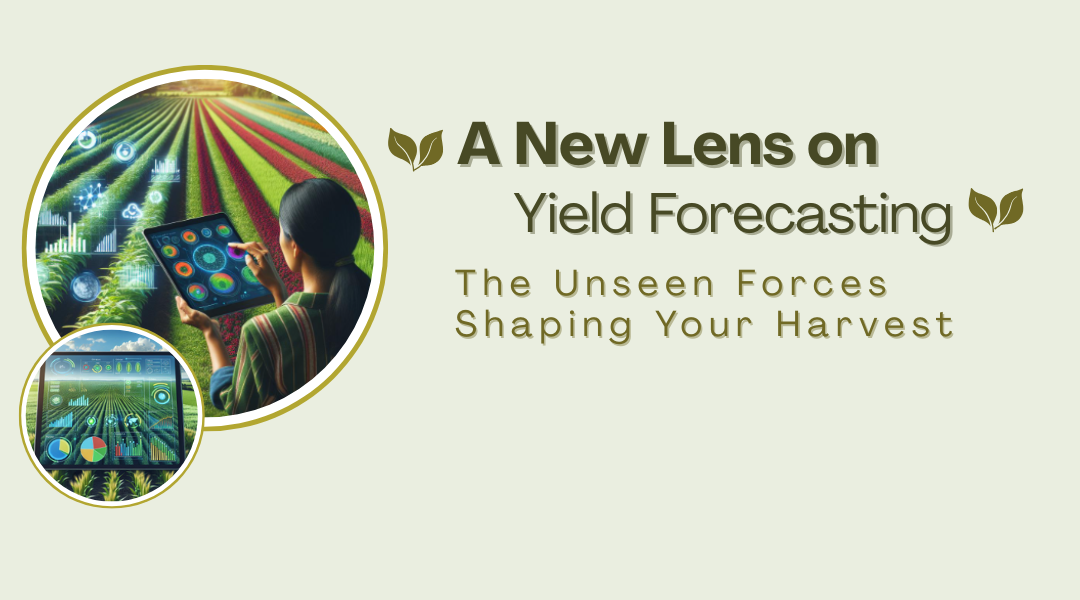For centuries, a farmer’s forecast was written in the clouds and felt in the soil. Today, it’s also decoded from data streams. Predicting the harvest is no longer just an art; it’s a complex science of weighing countless invisible variables. While traditional knowledge remains invaluable, a new era of precision agriculture is revealing the intricate dance of factors that truly determine the bounty—or shortfall—of a season.
The Digital Soil: What Really Feeds the Algorithm
At the heart of modern yield prediction are sophisticated models that learn from experience. But their accuracy hinges entirely on the quality and breadth of the data they consume. Think of it as teaching a new apprentice everything about the farm, not just this year’s details, but the story of the last twenty.
1. The Foundation: Historical Context and Real-Time Environment
A predictive model is only as wise as the history it’s taught. It needs deep archives: not just what was harvested each year, but the specific seed varieties used, the exact timing of planting, and a detailed log of every fertilizer application and irrigation pass. This is layered with hyper-local, real-time environmental data. It’s the difference between knowing it rained and knowing that Field 4 received a 2-inch downpour in 45 minutes, causing immediate runoff on its western slope.
- Example: A model for a coffee cooperative in Colombia might learn that a specific pattern of above-average nighttime temperatures during the flowering phase, combined with soil moisture levels below 25%, has historically led to a 20% reduction in bean density. This allows for proactive irrigation adjustments.
2. The Plant’s Pulse: Health and Genetics
We can now listen to the plants themselves. Drones equipped with multispectral cameras don’t just take pictures; they detect light reflections invisible to the human eye, revealing water stress or nitrogen deficiency weeks before the leaves turn yellow. Furthermore, the genetic blueprint of the chosen crop variety is a critical input. A model can predict the performance of a drought-tolerant maize hybrid versus a high-yield conventional one under the same conditions, because it understands their inherent potential and limitations.
3. The Intangible Elements: Economics and a Changing Climate
Modern farming exists within a web of external pressures. A smart forecast doesn’t operate in an economic vacuum. It can factor in projected commodity prices, influencing whether a predicted 5% surplus is a windfall or a glut. Most critically, these models are beginning to internalize the slow-moving tide of climate change, learning to anticipate how shifting hardiness zones and altered precipitation patterns are rewriting the rulebook for what “normal” means.
The Engine Room: How Machines Actually Learn to Predict
The “AI” in agriculture isn’t a single monolithic intelligence. It’s a toolkit of different learning styles, each with a unique strength.
- Learning from the Past (Supervised Learning): This is the most common approach. The model is trained like a student using old exams with answer keys. It’s fed thousands of past data points—soil readings, weather, management practices—each tagged with the actual yield that resulted. Through this, it learns the subtle correlations that lead to success or failure.
- Finding Hidden Patterns (Unsupervised Learning): This method explores data without pre-set answers. It might analyze satellite images of a vast agricultural region and, on its own, group fields into clusters based on health and growth progression. This can unexpectedly reveal that a set of farms sharing a specific soil type and elevation are all developing a blight a week ahead of others, enabling a regional alert.
- Learning by Doing (Reinforcement Learning): This is the frontier. Here, an AI doesn’t just predict; it acts. Imagine an automated irrigation system that learns through trial and error. It tries a watering schedule, measures the soil moisture and plant stress response, and adjusts its strategy in real-time to maximize health and conserve water, constantly refining its approach based on direct feedback from the environment.
Navigating the Human Hurdles in a Digital Age
This technological promise is not without its very human challenges.
- The Trust Gap: A recommendation to withhold water during a dry period is counter-intuitive. If the model cannot explain why—perhaps because its data shows a deep soil moisture reserve and a forecasted rain—the farmer will rightly ignore it. Developing models that can articulate their reasoning is as important as the predictions themselves.
- The Data Chasm: The most elegant algorithm is useless to a farmer whose records are in a notebook and whose soil hasn’t been tested in a decade. Bridging the gap between cutting-edge technology and on-the-ground reality is a monumental task.
- The Ethics of Information: Who owns the data from a farmer’s field? The farmer, the tech company providing the platform, or the insurer who uses it to set rates? Establishing clear rights and protections for this incredibly sensitive information is a critical, unresolved debate.
Conclusion: A Symphony of Insight, Not a Solo Performance
The ultimate value of this new approach to yield forecasting is not in replacing the farmer’s intuition, but in augmenting it with a symphony of data-driven insight. The farmer, with their deep, generational understanding of the land’s personality and quirks, remains the conductor. The predictive models are the orchestra, each instrument playing a part—the satellite measuring canopy cover, the soil sensor tracking nitrogen, the weather model forecasting storms—to create a richer, more complete picture of the future than either could alone.
This partnership between human wisdom and machine intelligence is forging a path toward a more resilient, productive, and sustainable agriculture, where the age-old question, “What will the harvest bring?” can be met with confidence and clarity.
